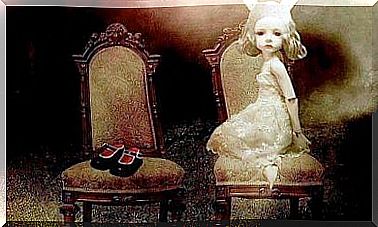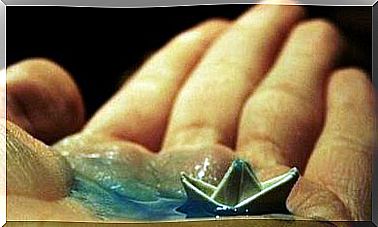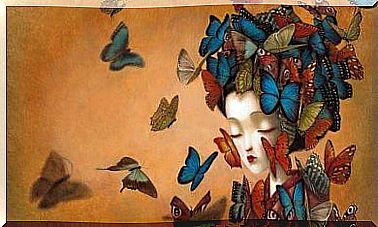Once Upon A Time In Hollywood: The Story Of Quentin Tarantino
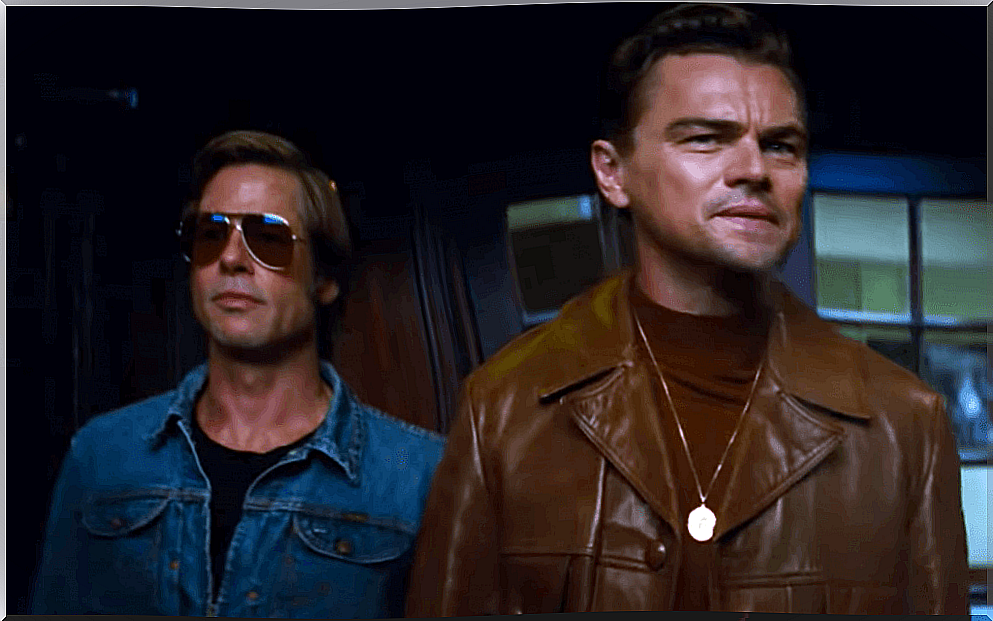
Tarantino has done it again. In a world of haste and immediacy, he has managed to gather countless people into a movie theater for about three hours, without looking at his cell phone, without talking, and just for the enjoyment that movies bring. And this is exactly what he has given us, the MOVIE, that is, in capital letters and without complexes, the pure love of the seventh art, that is, the films, the references, and all that Tarantino likes. Once Upon a Time in Hollywood is Quentin Tarantino’s latest film. He is a director who has been filming bloodshed for decades and has remained true to his own style in the collective imagination.
And when an artist, whatever type of artist, does what he or she likes, it also shows. Today, Tarantino has an audience waiting for his last film, a currency that supports his production and allows him to do exactly what he himself wants.
Whether it’s real or fashionable, Quentin Tarantino makes a comeback with his style and influence, immerses himself in his fetishes, and offers us a rewritten history; a new interpretation of what has already happened, but also what it could have been, while dancing on the wing of absolute entertainment.
Once Upon a Time in Hollywood shows us that not everything has been told, that not all commercial movies are the same thing, and that there are still viewers who are willing to sit still for hours and simply let the movie take with them.
It seems that Tarantino has not made this film for anyone but himself. And here’s the key to the film’s slow progress, where – unlike his previous films – the film’s climax can be waited for to the very end.
Intertextuality as a key factor
Tarantino studied the film industry by watching movies and immersing himself in the forgotten and abandoned gems of the seventh art. And this is what he wants to convey to his audience, because even in the dark one can find art.
From the beginning, Tarantino has made it clear to us that he will add everything he wants to his films. Always from his music to the bombardment of film freak references and through his fetishes.
We can learn about the film industry by watching Tarantino movies, we can sniff and explore a set of these old-fashioned spaghetti or italowestern and dive into kung fun to find the genuine diamonds that the more commercial film industry wanted us to hide.
Art transcends fashion, regulations and politics; art should be valued as art itself. And if the director we like suggests us a film (directly or indirectly), we might end up giving him a chance.
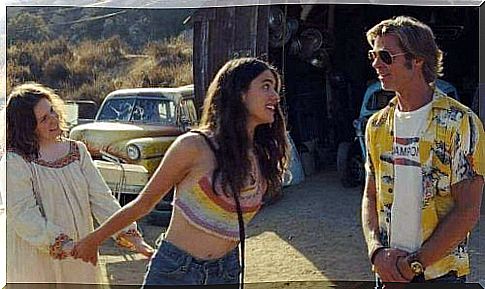
When we saw the trailer for Once Upon a Time, we were overwhelmed with confusion. We already knew what Tarantino liked, we already knew his filmography and yet we couldn’t properly understand what to expect from the film.
Was he going to talk about Charles Manson and the murders committed by his “family”? Would that be a fictional story? A tribute to those old American western films that fled to Europe in search of better roles? Yes and no, and a little of all this.
Once Upon a Time in Hollywood is a roller coaster of references; it is almost impossible for the viewer to grab them all. And even more interesting is to leave the cinema and discuss with those close to them the intertextual elements that everyone has perceived. We all grow in an inherited culture and are more or less inclined to receive certain messages.
Nostalgia
As a result of this idea of references, the title itself evokes a particular filmmaker, and which Tarantino himself deeply admires, for he has never concealed his love for the films made by Sergio Leone.
Sergio Leone wrote two “stories” with titles reminiscent of Tarantino’s latest and latest creation. On the other side was Leone’s last spaghetti western, or rather a dim western, C’era una volta il west , or Once Upon a Time in the West (although in Finland it was translated as the Harmonica). On the other hand, a film that was to become the great American experience of this Italian director; we are talking about the film Once Upon a Time in America, which, however, was not properly appreciated in the United States.
This nostalgic element is evident right from the very first scenes, where idealized Hollywood eventually becomes a hollow environment where actors have to adapt to what a certain age brings when they come. Grotesque fable, at the same time both unlikely and real, and which shows us the bitterest face of the film industry.
And all this in the middle of the background of a well-known and tragic element: the murder of Sharon Tate. Sharon Tate is portrayed to us as a young woman full of life who strives to delight her audience while watching one of her films with a smile.
We viewers know his tragic fate and inevitably sympathize and sympathize with his gaze, but also the gaze of an actor who could just as well be the new Clint Eastwood, suffering the consequences of maturity and an industry that has decided to compartmentalize the actor without giving him a chance to shine.
Nostalgia arises in every corner of the big screen, a memory of a glorious but at the same time barren era, mixed with Tarantino’s nap. A story told in a different way; what could have happened. Tarantino’s film also lacks irony, nor the choreographic violence inherent in his films; pathetic, beautiful and entertaining violence.
Sometimes it seems like we’re watching two different movies at the same time, two truths or two lies that end up bowing to a surprising and amusing but at the same time creepy ending.
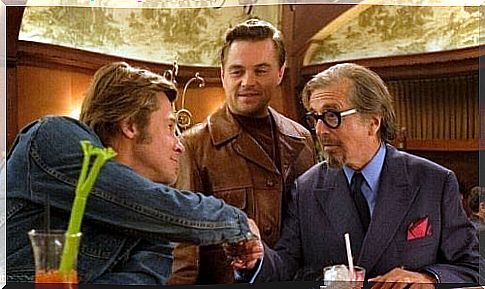
Once Upon a Time in Hollywood: The Tarantino Story
WARNING: From now on, the article may contain plot revelations
Tarantino tells us the story of the past about Hollywood, a place where dreams come true, but where they also disappear easily. The story of the real characters mixes with fiction, even if they might as well have belonged to reality.
In fact, Once Upon a Time in Hollywood plays with our knowledge of that era, immersing us in flooded streets through old-fashioned cars and introducing us to young women in Charles Manson’s “family” through an easily recognizable I’ll never say never to always song.
But do we really hope for a tragic end to Sharon Tate in this Tarantino film? No, not really. It would not be the kind of violence that Americans like, it would not be the aesthetic, entertaining, and musically enlivened violence that we are used to in Tarantino movies.
While Sharon Tate isn’t one of the most notable characters in the film, the truth is that Tarantino plays with blocking and composing so that our gaze is always directed towards her. As an example, Sharon is dressed in yellow in the middle of a large crowd party, and the camera moves so that the focus is specifically on this young woman. This forces us to get to know Sharon and feel empathy for her without excessive words.
We get to know Sharon through the opinions of other characters as well as the ways in which she interacts with the environment. Does Tarantino really want to introduce us to the character in such a moving way just to show us the most awful end result? Of course not, and if we pay enough attention, Tarantino will actually reveal the end right at the beginning of the film.
The beginning and the end
Thanks to a scene that directly refers to one of his earlier films, Inglourious Basterds, viewers can anticipate the end without much difficulty. So what did Tarantino do with the Unscrupulous Bastards? He rewrote history, avenging one of the darkest episodes of the past, and eventually killed Adolf Hitler himself.
Therefore, that reference to the beginning is directly related to what we will see in Once Upon a Time in Hollywood. And no, we don’t see brutal, tragic and painful violence, but funny violence that plays with blood, flames and action.
Stories that are apparently far apart come together at an eclectic end. Absolutely meticulous detail and constant play. Anything is possible in Tarantino’s films and this is how Once Upon a Time in Hollywood becomes a tribute to the film industry, an ode to seventh art and a show of Tarantino’s ability to tell stories, enjoy life, have fun with everything and especially enjoy.
The climate is to wait, but it is presented as catharsis, as the liberation of our conscience and the idea of “how things should have gone”.






